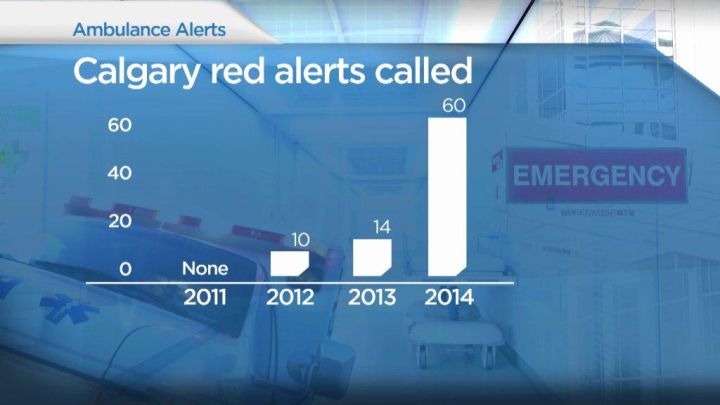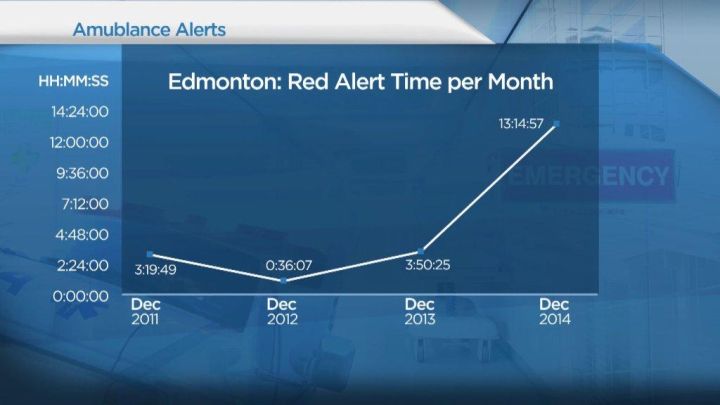CALGARY – According to data obtained by two freedom of information (FOIP) requests, the city of Calgary experienced a code red alert 60 times in 2014. In Edmonton, where code reds are tracked by the minute, the Alberta Health Services data indicates the city spent an accumulated 13 hours in a state where there were no ambulances available to respond to emergency calls.

The numbers were obtained by two separate FOIP requests. One was made by Global News and a second was released Thursday by the Alberta NDP.
“If (EMS) is in red alert it means that you can call 911 but there’s no ambulances to dispatch. And that’s because those ambulance are attached to our emergency rooms, waiting to drop off their patients, but unable to because of ER backlogs,” said Alberta NDP leader Rachel Notley.
Although the FOIP information was not public until Wednesday, paramedics have been speaking out about the issue for months. During Global Alberta’s special series “Code Red,” four paramedics sounded the alarm about increasing response times.
Alberta Health Services chief paramedic Darren Sandbeck says AHS is concerned about the rise in code red alerts, and attributes some of the problems last year to an exceptionally severe flu season.
“We have seen increases in red alerts in both Calgary and Edmonton since about 2012–that is true,” said Sandbeck in an interview with Global News. “We’re concerned by the numbers and it’s something we’re watching, but it’s important to understand that we still respond during a red alert. There are supervisors and other resources that are still able to respond.”
Alberta’s health minister says the province is working with AHS to improve efficiencies when it comes to providing emergency medical care. But Stephen Mandel believes it is necessary to add additional ambulances and crews to the front lines.



Comments